Fieldwork on the Bleibeskopf
Following the geophysical prospections an archaeological excavation was conducted during May and June on the Bleibeskopf in cooperation with the SPAU - Sascha Piffko - Archäologische Untersuchungen. The main aim of the fieldwork was to get a first significant evaluation of the archaeological preservation as well as to get an insight into the archaeological structure of area within the ramparts.
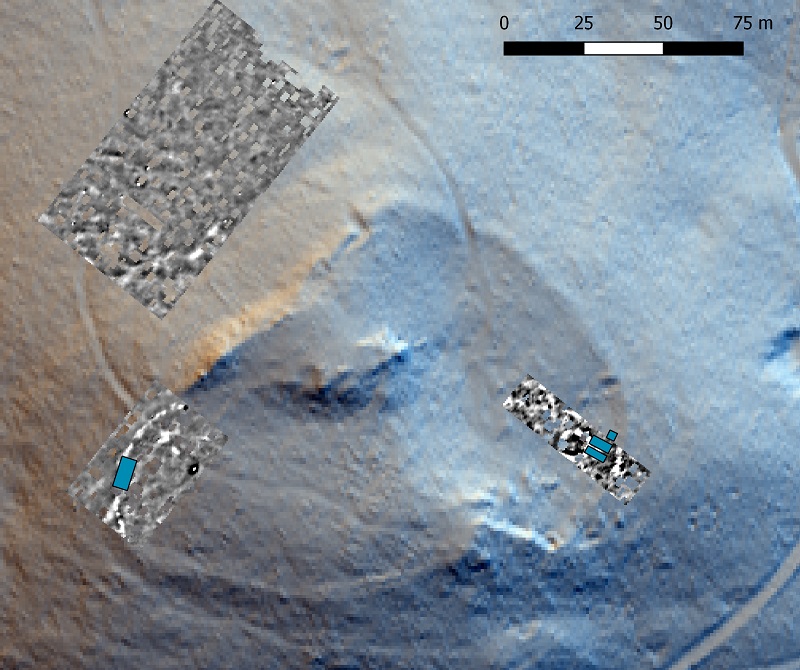 |
Based on the information from the results of the excavations from the early 20th century and especially the geophysical investigation two excavation areas were defined for this summer (Picture 1). |
| Picture 1: Bleibeskopf. Excavation arese above the magnetogram and Hillshading from multiple directions |
|
Especially area 1 in the south-eastern part of the hillfort revealed the large archaeological potential of the site: already only few centimetres below the surface a cultural layer interspersed with charcoal and ceramic fragments in direct connection to the rampart was excavated. In this area the quartzite rocks and smaller pieces from the rampart show explicit effects of heat and charcoal was omnipresent adjacent area (Picture 2). |
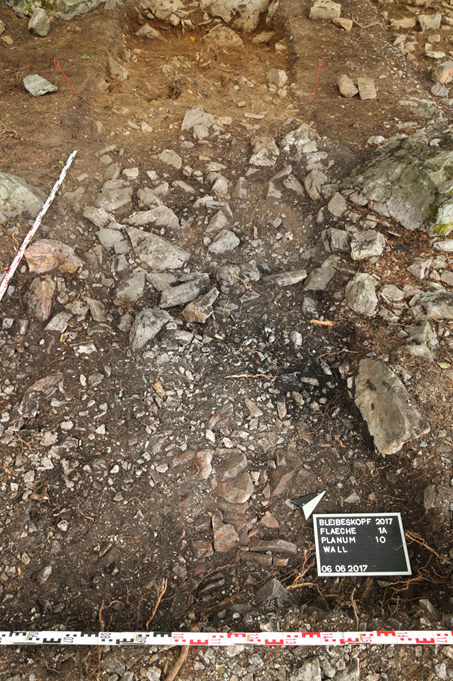 |
The analyses of the burnt material will give an insight into the dating and character of this event. Besides this result a large intrusion could be clearly identified as an excavation trench of the 20th century. Moreover stone settings could be revealed which may be the grounding for dwellings. The aims of the ongoing examination of the findings and the upcoming field season will verify these findings and will provide a deeper insight into the character of all these features. Fortunately the material culture seems chronologically homogenous as all indicative fragments of ceramic may be attributed to the Urnfield Culture. |
| Picture 2: Bleibeskopf. Excavation area 1 A (D. Neumann). |
Overall the first field season underlines the large potential of the Bleibeskopf and sets the agenda for further investigations in the field
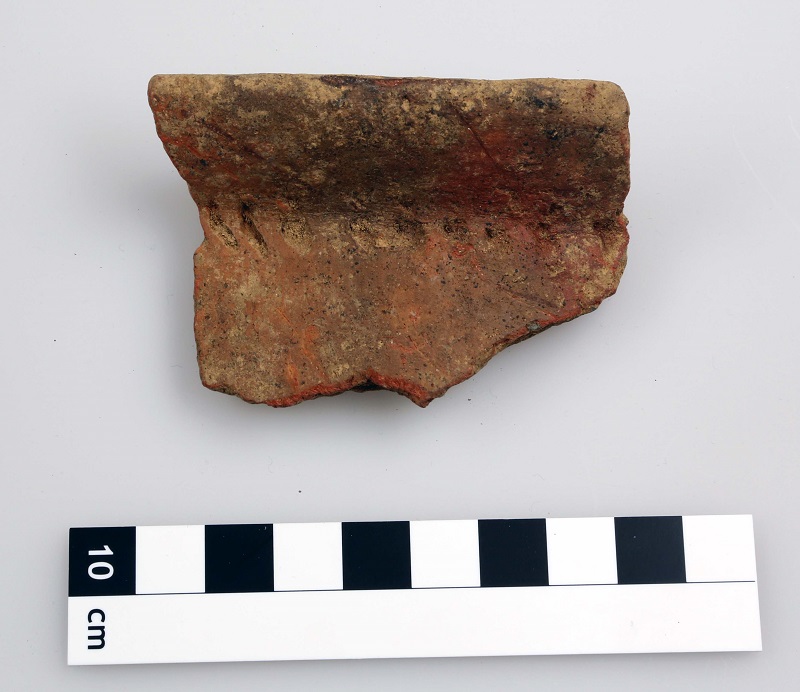 |
|
| Picture 3: Bleibeskopf. Rim fragment (D. Neumann) |
(Author: D. Neunmann)
Excavation in autumn 2017
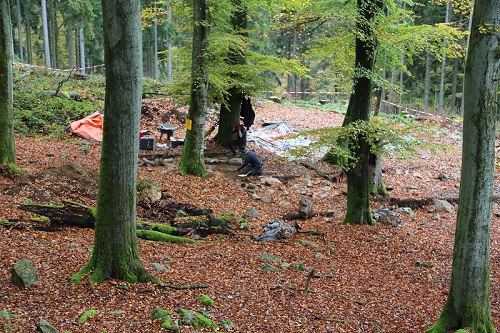 |
Between October and November 2017 we continued our excavations at the Bleibeskopf hillfort in Taunus Mountains dating to the urnfield period. Starting from our first glimpse last summer the excavation was focused on the south-eastern part of the plateau, where the trenches from our summer campaign where continued. | |
| Picture 1: Bleibeskopf. Fieldwork in Autumn (Photo: D. Neumann) |
| Despite the fact that we couldn’t verify any construction features, we gathered information on the construction of the rampart, and uncovered insights to the adjacent stratigraphy. | 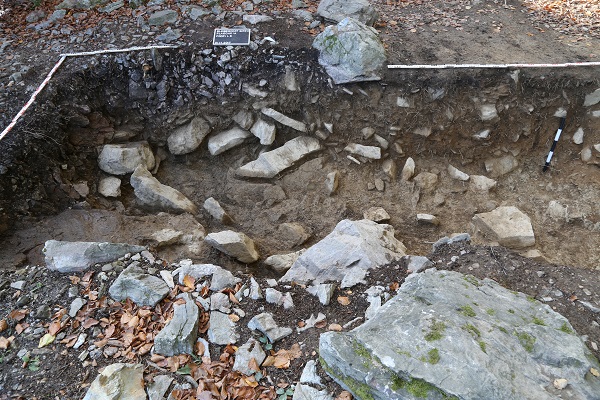 |
|
| Picture 2: Bleineskopf. Trench 1A: Section through the remains of the rampart (Photo: D. Neumann) |
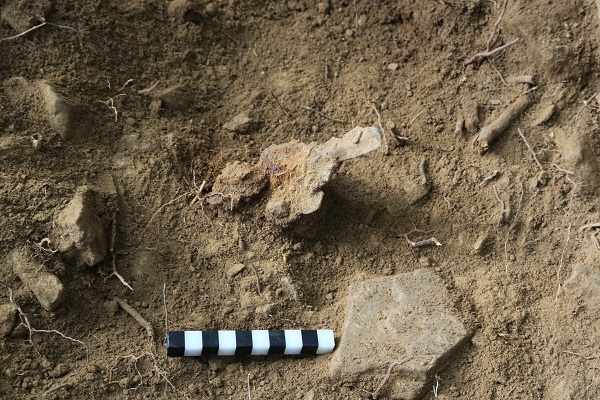 |
Trench no. 3 where dug in autumn on the highest point of the south-eastern plateau to verify the existence of an assumed terrace for the settlement. The archaeological material found here was less shattered and translocated. Because our trench was too small to make a further statement, we will continue our excavations in 2018 to see if we can find clear traces of a settlement. | |
| Picture 3: Bleibeskopf. Trench 3: Possible archaeological features in the planum (Photo: D. Neumann) |
| Because of the extraordinaire bad preservation conditions at the Bleibeskopf we could not verify any architectural features up to now. On the other side the high number of archaeological finds, the results of the survey and remote sensing sheds a light on the importance of this site. The excavation proofs a single occupation phase based on the archaeological material, which dates to the late urnfield-period (HaB2/3). Beside ceramics the material contains some single iron artefacts, stone tools and spindle whorl which implies that the site was also used as a production place. | 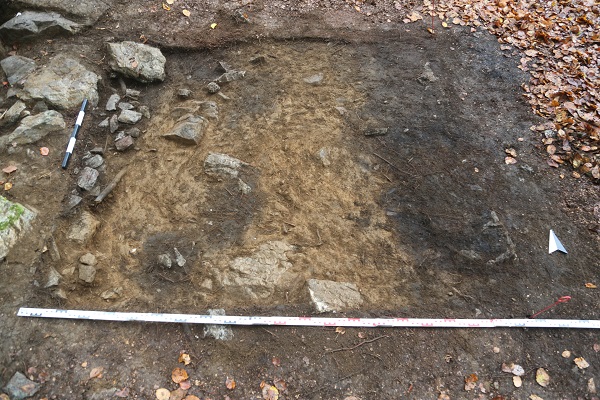 |
|
| Picture 4: Bleibeskopf. Trench 1B: Iron spearhead in situ (Photo: Daniel Neumann) |
Our fieldwork is accompanied by other scientific methods. In first place we sample sediments and investigate the macro-remains and chemical composition of the soil. With this interdisciplinary approach we hopefully will find more indications for the inhabitation and use of the Bleibeskopf within the late urnfield-period and generate data for a solid chronological framework.
(Author D. Neunmann)





